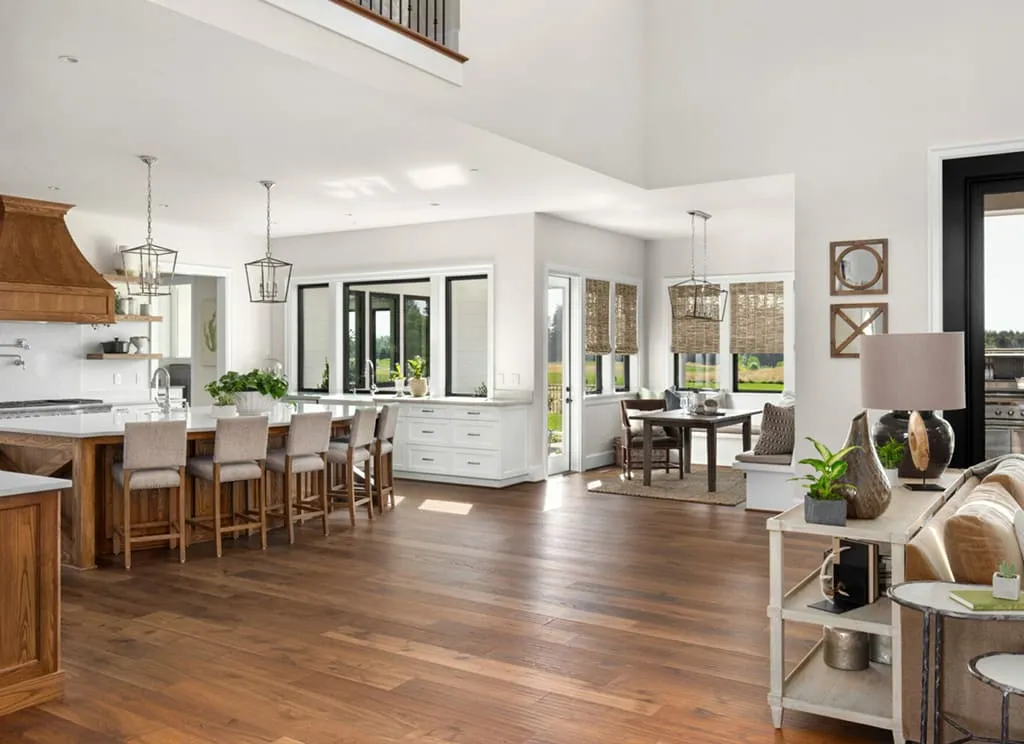Is Vintage Tile Flooring Right for Your Home? Pros and Cons Explained
Vintage tile flooring has that magical ability to take you back in time. It adds a touch of nostalgia, class, and uniqueness that’s hard to replicate with modern alternatives. But before you go all-in, you’ve got to ask: Is vintage tile flooring the right fit for your home? Like everything in design, it comes with its fair share of perks and pitfalls. Let’s dig in.
What is Vintage Tile Flooring?
Vintage tile flooring refers to tiles that either originate from or are inspired by styles from decades past—think intricate patterns, bold colors, and that oh-so-charming retro vibe. These tiles are often crafted from traditional materials and showcase patterns from as early as the 1900s.
You'll often see these in old European homes or classic American bungalows. Whether they’re genuinely aged or modern reproductions, they’re built to bring in that warm, lived-in feel.
Types of Vintage Tile Flooring
Encaustic Cement Tiles
These beauties are known for their bold patterns and rich pigments. They’re handmade, which means no two tiles are exactly the same—perfect for that one-of-a-kind floor look.
Terrazzo Tiles
An elegant blend of marble chips and concrete, terrazzo tiles scream timeless luxury. They’re durable and often used in high-traffic areas.
Porcelain and Ceramic Tiles
Classic options that offer a wide range of vintage designs—from floral prints to geometric shapes.
Mosaic Tiles
Tiny tiles arranged into intricate designs, mosaics are a staple in vintage bathrooms and entryways.
Pros of Vintage Tile Flooring
Unique Aesthetic Appeal
Vintage tiles are statement-makers. Their designs add instant charm and character to any space. If you're looking to stand out or add a historical touch, these are for you.
Durable and Long-Lasting
Many vintage tiles, especially those made from porcelain or terrazzo, are incredibly tough. They’ve literally stood the test of time.
Easy Maintenance
Most vintage tiles clean up nicely with just some warm water and mild detergent. And with the right sealant, they resist stains like a champ.
Adds Character and Value to Your Home
Buyers love unique features. A well-done vintage flooring can boost your home's value and leave a lasting impression.
Eco-Friendly Option
Reclaimed vintage tiles give new life to old materials. That’s sustainability with style.
Cons of Vintage Tile Flooring
Can Be Expensive
Authentic vintage tiles (or high-quality reproductions) can cost a pretty penny—especially when you factor in the cost of skilled installation.
Installation Challenges
These aren’t your basic square tiles. With intricate patterns and specific spacing needs, they demand careful, experienced hands.
May Not Suit Modern Decor
If your home is ultra-modern, vintage tiles might clash. But then again, opposites attract, right?
Cold and Hard Underfoot
Tiles aren’t exactly cozy. Without underfloor heating or some plush rugs, your feet might not be thrilled.
Where Does Vintage Tile Flooring Work Best?
Kitchens
Vintage tiles add flavor—literally and figuratively. Their durability and easy cleaning make them perfect for kitchen spills and splatters.
Bathrooms
They resist moisture and bring a spa-like charm, especially with classic mosaic or geometric styles.
Entryways and Hallways
Make a great first impression! Vintage tiles here create a welcoming, stylish vibe.
Outdoor Patios
Weather-resistant vintage tiles can transform your patio into a Mediterranean getaway.
Cost Considerations
Expect to pay anywhere from $7 to $30 per square foot for quality vintage or reproduction tiles. Installation adds to that, especially if the design is complex. But here’s the upside—it’s an investment in beauty and longevity.
Maintenance Tips
•Clean with care: Stick to pH-neutral cleaners.
•Seal the deal: Sealing your tiles (especially porous ones like cement) prevents stains and water damage.
•Reseal regularly: Every couple of years, depending on usage.
Design Tips for Using Vintage Tile Flooring
•Balance bold patterns: Use neutral wall colors or modern fixtures to keep the look fresh, not fussy.
•Create borders or accents: Instead of tiling the whole room, consider a patterned "rug" made of tiles.
•Match with vintage-style fixtures: Think clawfoot tubs, brass faucets, and retro appliances.
How to Source Authentic or Reproduction Tiles
You can find gems at salvage yards, antique shops, or specialty tile dealers. For reproductions, brands like Fireclay Tile or Clayhaus Ceramics offer stunning modern spins on vintage classics. Always check the quality, especially with reclaimed pieces—cracks and chips might look cool but can compromise durability.
Alternatives to Vintage Tile Flooring
•Vintage-look vinyl: Cheaper, easier to install, and still pretty stylish.
•Peel-and-stick tiles: Great for renters or temporary makeovers.
•Stamped concrete or painted tiles: If you're the creative type, these are solid DIY options.
Should You DIY or Hire a Pro?
DIY Pros:
•Save money
•Control over design
DIY Cons:
•Time-consuming
•Easy to mess up pattern alignment
Hiring a Pro:
•Faster and cleaner results
•Expertise with layout and tricky cuts
If you’re working with rare or pricey tiles, a pro is the safer bet.
Conclusion
So, is vintage tile flooring right for your home? If you’re all about character, durability, and timeless design, the answer might be a resounding yes. But make sure you’re ready for the cost, potential challenges, and the need for a good design eye. Whether you go all in or use it as an accent, vintage tile flooring can transform your home into a space full of personality and charm.
FAQs
1. Is vintage tile flooring high maintenance?
Not really! Just make sure it’s sealed properly and cleaned with non-acidic products. Regular maintenance keeps it looking sharp for years.
2. Can I install vintage tile flooring over concrete?
Yes! Concrete is actually a great base for tile installation. Just ensure it’s level and crack-free.
3. What’s the best room to use vintage tiles in?
Kitchens and bathrooms are top choices thanks to tile’s moisture resistance and easy cleaning.
4. Are vintage tiles slippery?
They can be, especially when wet. Look for textured finishes or use non-slip sealants for added grip.
5. How do I know if a tile is truly vintage?
Authentic vintage tiles often have irregular edges, wear patterns, and may come with minor chips or discoloration. Ask for provenance if buying from a dealer.
Source url - https://joripress.com/is-vintage-tile-flooring-right-for-your-home-pros-and-cons-explained



Considering the warm ambiance it imparts along with its durability and affordable maintenance, vintage tile flooring might just be an ideal upgrade for your home's aesthetic without breaking banks. Just make sure to research on compatibility of color scheme before installation!
Considering the timeless appeal and durability of vintage tile flooring, it surely adds character to any home while offering a host of benefits like low maintenance costs. However Be mindful that replacement or repair can be costly in comparison.
The thorough examination of vintage tile flooring's pros and cons in this article provides a well-rounded consideration for homeowners aiming to add personality while remaining practical.卓越的!
Are the nostalgic charm and durability of vintage tile flooring right for your home? This article delves into pros like its timeless beauty, low maintenance costs; whereas cons include limited color/design choices that might not suit all aesthetics.
This article provides a balanced yet comprehensive review of the pros and cons associated with installing vintage tile flooring in one's home, making it an ideal read for those considering this décor choice.
This informative article outlines the advantages and drawbacks of installing vintage tile flooring, making it a great resource for homeowners considering its aesthetic charm or functionality.
Absolutely informative! This article thoroughly elucidates the pros and cons of choosing vintage tile flooring for a home, providing valuable insights to help make an informed decision on whether its durability or charm is matched by potential maintenance issues.
Choosing vintage tile flooring for your home can be a nuanced decision balancing aesthetics with durability. This well-written article delves into the pros and cons, providing valuable insights to help you make an informed choice.
Absolutely essential reading for homeowners considering vintage tile flooring – the article provides a balanced insight into both sides of this decision, weighing up its timeless elegance against potential maintenance issues.WELL DONE!
Through a comprehensive analysis of the benefits and drawbacks, this article effectively highlights whether classic vintage tile flooring is an appropriate addition to one's home. The insights provided are invaluable for those seeking durability coupled with nostalgic charm.














